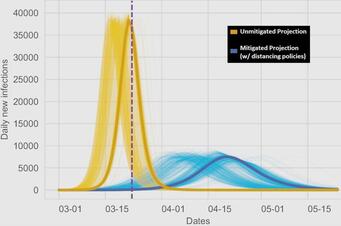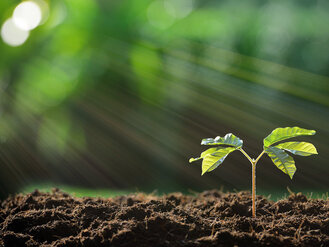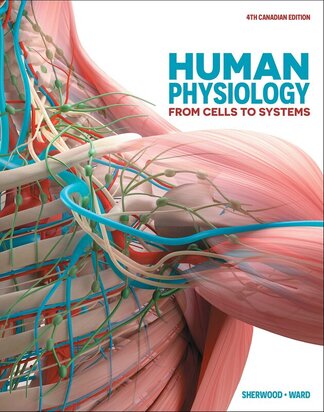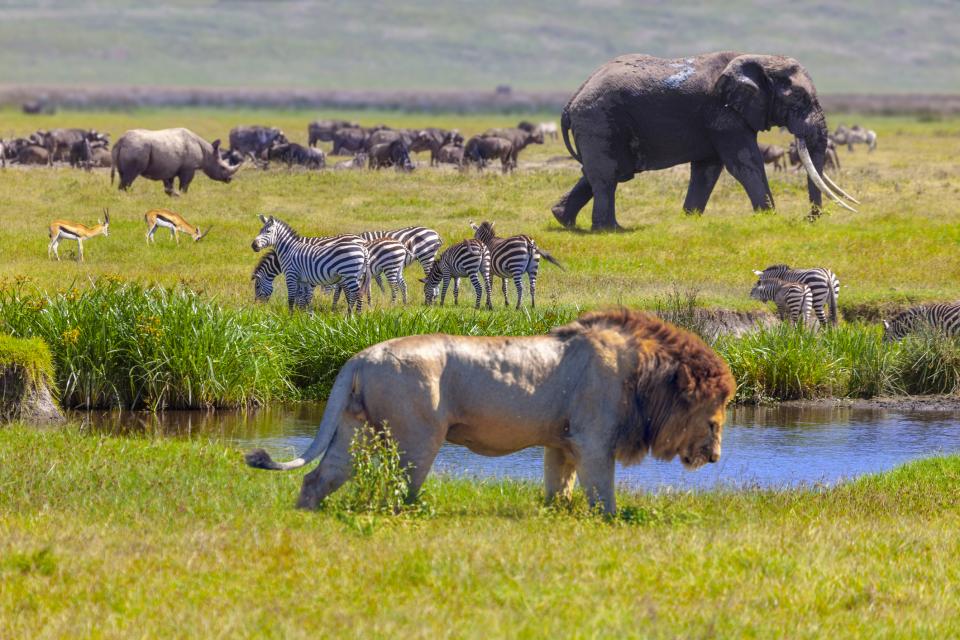Introduction to BIOLOGY: the Living Earth
 Ecosystem Interactions and Energy
Ecosystem Interactions and Energy Students use mathematical and computer models to determine the factors that affect the size and diversity of populations in ecosystems, including the availability of resources and interactions between organisms.
Guiding Questions:
What factors affect the size of populations within an ecosystem?
What are common threats to remaining natural ecosystems and biodiversity? How can these threats be reduced?
Guiding Questions:
What factors affect the size of populations within an ecosystem?
What are common threats to remaining natural ecosystems and biodiversity? How can these threats be reduced?
 History of Earth's Atmosphere: Photosynthesis and Respiration
History of Earth's Atmosphere: Photosynthesis and Respiration Students make a model that links photosynthesis and respiration in organisms to cycles of energy and matter in the Earth system. They gather evidence about the linked history of Earth’s biosphere and atmosphere.
Guiding Questions:
How do living things acquire energy and matter for life?
How do organisms store energy?
How are photosynthesis and cellular respiration connected?
How do organisms use the raw materials they ingest from the environment?
How has the cycling of energy and matter changed over Earth’s history?
Guiding Questions:
How do living things acquire energy and matter for life?
How do organisms store energy?
How are photosynthesis and cellular respiration connected?
How do organisms use the raw materials they ingest from the environment?
How has the cycling of energy and matter changed over Earth’s history?
 Evidence of Evolution
Evidence of Evolution Students develop a model about how rock layers record evidence of evolution as fossils. Building on their learning from previous grades, they focus on effectively communicating this evidence and relate it to principles of natural selection.
Guiding Questions:
How do layers of rock form and how do they contain fossils?
Why do we see fossils across the world from each other but living organisms that are very different from each other?
What evidence shows that different species are related?
How did modern day humans evolve?
Guiding Questions:
How do layers of rock form and how do they contain fossils?
Why do we see fossils across the world from each other but living organisms that are very different from each other?
What evidence shows that different species are related?
How did modern day humans evolve?
 Inheritance of traits
Inheritance of traits Students develop explanations about the specific mechanisms that enable parents to pass traits on to their offspring. They make claims about which processes give rise to variation in DNA codes and calculate the probability that offspring will inherit traits from their parents.
Guiding Questions:
How are characteristics of one generation passed to the next?
What allows traits to be transmitted from parents to offspring?
How does variation affect a population under selective pressures?
Guiding Questions:
How are characteristics of one generation passed to the next?
What allows traits to be transmitted from parents to offspring?
How does variation affect a population under selective pressures?
 Structure, Function and Growth (from cells to organisms)
Structure, Function and Growth (from cells to organisms)Students use models to create explanations of how cells use DNA to construct proteins, build biomass, reproduce, and create complex multicellular organisms. They investigate how these organisms maintain stability.
Guiding Questions:
What happens if a cell in our body dies?
How does the structure of DNA affect how cells look and behave?
How do systems work in a multi-celled organism (emergent properties) and what happens if there is a change in the system?
How do organisms survive even when there are changes in their environment?
Guiding Questions:
What happens if a cell in our body dies?
How does the structure of DNA affect how cells look and behave?
How do systems work in a multi-celled organism (emergent properties) and what happens if there is a change in the system?
How do organisms survive even when there are changes in their environment?
 Ecosystem Stability & the Response to Climate Change
Ecosystem Stability & the Response to Climate Change Students use computer models to investigate how Earth’s systems respond to changes, including climate change. They make specific forecasts and design solutions to mitigate the impacts of these changes on the biosphere.
Guiding Questions:
What effects changes in ecosystems that ultimately effect populations?
What are the changes that are happening in the climate and what effects are those having on life?
How are human activities impacting Earth’s systems and how does that affect life on Earth?
What can humans do to mitigate their negative impact on the environment?
Guiding Questions:
What effects changes in ecosystems that ultimately effect populations?
What are the changes that are happening in the climate and what effects are those having on life?
How are human activities impacting Earth’s systems and how does that affect life on Earth?
What can humans do to mitigate their negative impact on the environment?

